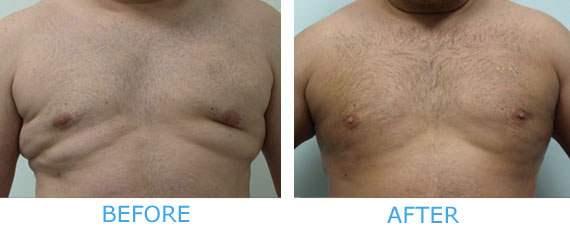Frequently Asked Questions About Cosmetic Procedures
Q. I've decided to have Smartlipo. How do I choose the best surgeon to do my procedure?
A. There are many physicians advertising Smartlipo . While it may seem that one is as good as the next, in reality, there is a huge disparity when it comes to results. A recent study of medical centers doing bypass surgery found that those centers that perform the most procedures get the best results. The same is true of centers doing Smartlipo / tumescent liposculpture (liposuction ). When one chooses a center for Smartlipo / liposculpture (tumescent liposuction ), one should look at the number of procedures performed... to a point. Because time and care is needed to get the best results, as well as experience, it is important that the physician doesn’t rush through the procedure.
In general, one should choose a physician who has done a minimum of 500 procedures, and at least 20 per month on an ongoing basis. Not only is important to have experience, it is also important that the physician maintains his skills on an ongoing basis. At BodyCare, Dr. Stratt has performed Smartlipo / liposculpture (tumescent liposuction ) on well over 1000 patients, and has performed over 3000 procedures on individual body areas. He averages 27 cases a month, or 80 individual body areas every month. Dr. Stratt limits the number of procedures he does which ensures that he won't "rush through" a procedure and get poor results, yet it enables him to keep his skills optimal.*
What makes Body Care unique? Dr Stratt is a preeminent liposculpture artist who has repaired other surgeon's mistakes. *
*
Q. What type of Doctor can do Smartlipo / liposculpture (tumescent liposuction)?
A. While it is commonly held that only plastic surgeons are qualified to perform liposuction, in truth, Smartlipo / liposculpture (tumescent liposution ) is a multi-disciplinary specialty. Liposuction was first developed by Dr. Fisher in Rome, Italy. He specialized in Gynecology. Dr. Iluiz and Fournier developed the cross-tunneling technique and were general surgeons. Dr. Klien, a dermatologist, developed tumescent anesthesia. Smartlipo / liposculpture (tumescent liposuction ) is truly a multi-disciplinary specialty. In fact, some of the best liposculpturists are Emergency Physicians.
Unlike other surgical techniques, Smartlipo / liposculpture ( tumescent liposuction ) doesn’t involve any cutting (except for very small 2-3mm holes) or suturing (stitches). It is a very unique procedure. While there are plastic surgeons who perform Smartlipo / liposculpture (tumescent liposuction ), completing a fellowship in plastic surgery does not, necessarily impart the skill set necessary to get excellent results in Smartlipo / liposculpture (tumescent liposuction ). In fact, Dr. Stratt has “repaired” many other surgeon’s “mistakes”. One example is shown below. The first picture is a patient who had traditional liposuction under general anesthesia using the “old fashioned” technique using large canulas. Notice the unsightly indentations and grooves. With the skill of an artist, Dr. Stratt was able to “repair” the damage. For those wishing traditional liposuction under general anesthesia and surgical corrections, such as breast augmentation, we do have plastic surgeons on staff at BodyCare.*
Q. Is Smartlipo or liposculpture (tumescent liposuction) safe?
A. Over the years, liposuction has become increasingly safe. Initially, in the 1970's and 1980's, when liposuction was first developed, the complication rate was much higher than today. With improved technology, however, the safety profile of liposculpture (tumescent liposuction) has increased exponentially. The type of anesthesia used is critically important however. Although general anesthesia is considered safe today, there is still a much higher risk associated with its use as compared to regional or tumescent anesthesia. A review article written in 2007 by Dr. Boni looked at the safety profile of tumescent liposuction in 396,457 patients. There were no reported deaths.
And of course at BodyCare, we have never experienced any serious life threatening complication.
Q. What makes Body Care safer? Isn't it a Med-Spa?
A. Although Body Care has the look and feel of a well appointed med-spa, at its heart is a fully functional acute care facility. Dr. Stratt designed the facility from the ground up and he used as his model the emergency department that he was associated with. We have full cardiac monitoring including heart rate, oxygen levels, and blood pressure. Every patient is monitored for the entire smart lipo or liposculpture (tumescent liposuction) procedure. In addition, should the need arise, Body Care is equipped with supplemental oxygen, intubation equipment, and full Advanced Cardiac Life Support. Our head nurse is also critically care certified. And of course, Dr. Stratt, has over 10 years experience in Emergency Medicine.
Q. Have you ever needed to use any of that equipment?
A. Yes, on two occasions. Once, a patient’s blood pressure dropped during the smartlipo / liposculpture (tumescent liposuction) procedure. She was given a medicine called atropine right away and her blood pressure returned to normal. She was never in any danger at any time. The second was a patient who developed higher than normal blood pressure and was given a medicine called nitroglycerine. His blood pressure returned to normal as well, and in both cases we were able to finish the smartlipo / liposculpture (tumescent liposuction) procedures without incident. One needs to understand that as of this writing, we have performed Smartlipo or liposculpture (tumescent liposuction) on over 1200 patients. Our safety profile is phenomenal.
Q. Why is it safer to have the smartlipo or liposculpture (tumescent liposuction) procedure performed with tumescent (regional) anesthesia versus general anesthesia?
A. For several reasons. Firstly, although the risk of general anesthesia is relatively small, it is not negligible. It has been reported that the risk of mortality from general anesthesia is approximately 1/20,000. This means that if 400,000 liposuctions are being performed yearly under general anesthesia, approximately 20 people per year will have an unfortunate outcome based on numbers alone. On the other hand, with regional or tumescent anesthesia, the mortality rate remains very close to zero. Secondly, because the patient is awake, the doctor gets feedback. Only the adipose tissue (fat layer) is numb, so if the patient feels a pinch, it means that the canula (the instrument used to remove the fat) is probably touching the muscle layer. In which case, the canula is immediately removed well before any serious injury takes place. Thirdly, with general anesthesia, there is always the risk of developing deep vein thrombosis (DVT), or worse an emboli (a clot), which if it goes to the lung can be fatal. The risk increases the longer the patient remains motionless on the operating table. Because the patient remains awake and is always moving, the risk of having a DVT or emboli is greatly reduced and negligible.*
Q. How has Body Care achieved such a remarkable safety record?
A. There are two keys to safety. Prevention and preparedness.
In terms of prevention, all our patients have a thorough pre-procedure evaluation. This includes a detailed medical history including a list of current medicines the patient is taking, as well as laboratory tests, and a physical exam. Lidocaine that we use in the tumescent fluid is extremely safe under carefully controlled conditions. But like all medicines, if the directions aren't carefully followed, it can be dangerous. Even everyday medicines like Tylenol, or aspirin can be fatal if the directions aren't carefully followed which is why we are extremely careful to follow all the directions. We check and double check every bag of fluid.
Lidocaine is metabolized by the liver. That is, the liver works to remove the lidocaine which is used to numb the patient. It takes up to 48 hours for the liver to clear the lidocaine from the patient’s system. Every patient’s liver function is evaluated on two levels. Firstly, a complete liver panel lab test is obtained and secondly, we evaluate any medicine(s) that the patient is taking that may interfere with the removal of the lidocaine. If the patient is taking one of those medicines, under their doctor’s supervision, we have them stop taking it for up to two weeks (depending on the medicine) in order for it to completely clear their system before we proceed with the procedure. If they cannot stop or change their medicine, for any reason, we will not perform the procedure under any circumstances. In other words, if we cannot perform Smartlipo or liposculpture (tumescent liposuction) with absolute certainty that it will be performed safely, than we will not perform it.
Even though we pay the utmost attention to prevention, we still maintain our procedure room fully prepared to handle any potential untoward event. Although the likelihood of something going wrong is extremely low when performing Smartlipo or liposculpture (tumescent liposuction), as the saying goes, it pays to be prepared. To that end, we maintain the same level of critical care support, that one would find in an emergency room: supplemental oxygen, IV access, full cardiac monitoring, intubation and breathing equipment, as well as resuscitation medicines.
